Pachylioides resumens
|
|
Updated as per http://www.pybio.org/SPHINGINAE.htm (Paraguay), November 2007
Updated as per http://www.pybio.org/MACROGLOSSINAE.htm (Paraguay)
Updated as per personal communication with Johan van't Bosch (Mato
Grosso, Brazil, September 23), March 2008
Updated as per More, Kitching and Cocucci's Hawkmoths of Argentina 2005, March 2008
Updated as per personal communication with Larry Valentine (Itanhandu, Minas Gerais, Brazil, May 4, 2009); May 4, 2009
Updated as per personal communication with Ezequiel Bustos (Aguas Blancas, Salta, Argentina, 405m); December 2009
Updated as per
AN ANNOTATED CHECKLIST OF THE SPHINGIDAE OF BOLIVIA, December 2009
Updated as per personal communication with Andres Urbas (Camp Caiman, near Kaw, French Guiana, April 1, 2011); May 7, 2011
Updated as per personal communication with Gregory Nielsen (Villavicencio, Meta, Colombia, June 17, 2011, 500m); June 30, 2011
Updated as per personal communication with Brian Fletcher (Rancho Naturalista Lodge, Cartago, Costa Rica, October 24, 2007, 900m); March 18, 2014
Updated as per "A Hawk Moths fauna of southern Maranhao state, Brazil, ... "; NEVA: Jahrgang 34 Heft 3 November 2013; via Jean Haxaire; April 5, 2014
Updated as per personal communication with Sergio D. Rios Diaz in CATOLOGO DE LOS SPHINGIDAE (INSECTA: LEPIDOPTERA) DEPOSITADOS EN
EL MUSEO NACIONAL DE HISTORIA NATURAL DEL PARAGUAY; sent to me in July 2014 by Sergio D. Rios Diaz.
Updated as per personal communication with Tony James (Radisson, Panama, Panama, April 21, 2015); May 6 2015
Updated as per personal communication with Ezequiel Bustos (Shilap revta. lepid. 43 (172) diciembre, 2015, 615-631 eISSN 2340-4078 ISSN 0300-5267), January 4, 2016
Updated as per personal communication with Frank and Anna West (Brazil: Bahia and Rondonia; Guatemala: Izabal and Suchitepequez), January 19, 2021
Updated as per personal communication with Clarissa Silva Moreira (Brazil: Rio Grande do Sul: Porto Alegre, April 19, 2019, 74m), April 16, 2022
Updated as per personal communication with Les Catchick (Palmari, Amazonas, Brazil, August 19, 2019), April 16, 2022
|
Pachylioides resumens
pack-il-EE-oy-desMrez-ZOO-mens
(Walker, 1856) Pachylia
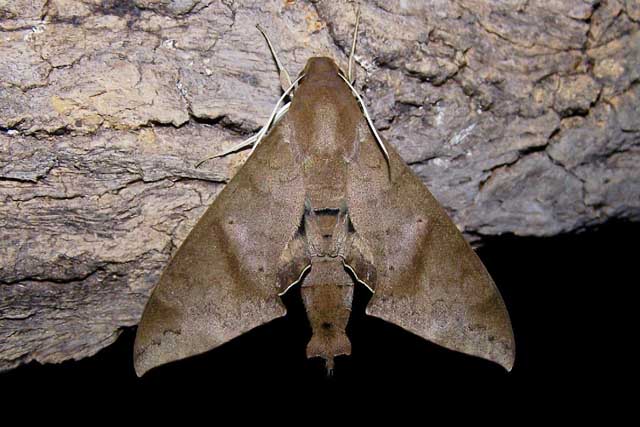
Pachylioides resumens male, Paraguay, PYBIO.
This site has been created by Bill Oehlke.
Comments, suggestions and/or additional information are welcomed by Bill.
TAXONOMY:
Family: Sphingidae, Latreille, 1802
Subfamily: Macroglossinae, Harris, 1839
Tribe: Dilophonotini, Burmeister, 1878
Genus: Pachylioides Hodges, 1971 ...........
Species: ficus Walker, 1856
|
DISTRIBUTION:
Pachylioides resumens
(Wing span: 3 1/2 - 4 inches (6.3 - 10.2 cm)) flies in all biomes in
Argentina: Buenos Aires, Cordoba, Corrientes, Chaco, Entre Rios, Formosa, Jujuy, La Rioja, Misiones, Tucuman, Salta (405m EB);
Brazil: Rio de Janeiro (specimen type); Mato Grosso (JvB); Minas Gerais (LV); southern Maranhao; Bahia and Rondonia (F&AW);
Santa Catarina: Blumenau (JOR); and all other Brazilian states (JH)
Bolivia: Beni, La Paz, Santa Cruz;
Paraguay: Asuncion, Alto Paraguay, Boqueron, Presidente Hayes,
Concepcion, Amambay, San Pedro, Canindeyu, Caaguazu, Cordillera, Paraguari,
Guaira, Caazapa, Misiones, Alto Parana, and (probably Central and Itapua);
north through Ecuador: Napo and Pastaza: Yasuni;
French Guiana: Kaw;
probably Suriname and probably Guyana and probably Peru;
Venezuela;
Colombia: Meta; Bogota; and Central America:
Panama: Panama: Radisson (TJ);
and Costa Rica: Cartago: Rancho Naturalista Lodge (BF); to
Mexico;
Guatemala: Izabal and Suchitepequez; and the West Indies. Strays occasionally find their way into southern Texas and southeastern Wyoming.
The forewing tip is hooked. The upperside of the forewing is gray-brown with dark brown incomplete wavy lines
and dark brown and orange shading.
The upperside of the hindwing has orange shading and dark brown patches at the tip and in the center. Pachylioides resumens male,
Yasuni, Ecuador, (September 7, 2002 - 1:45 AM), courtesy of Steve
Graser. | 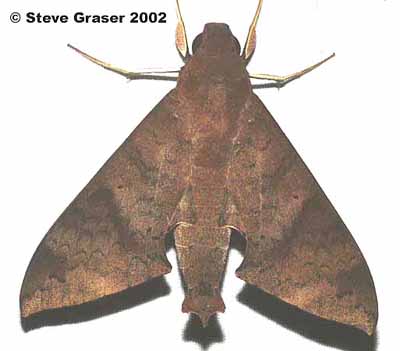 |
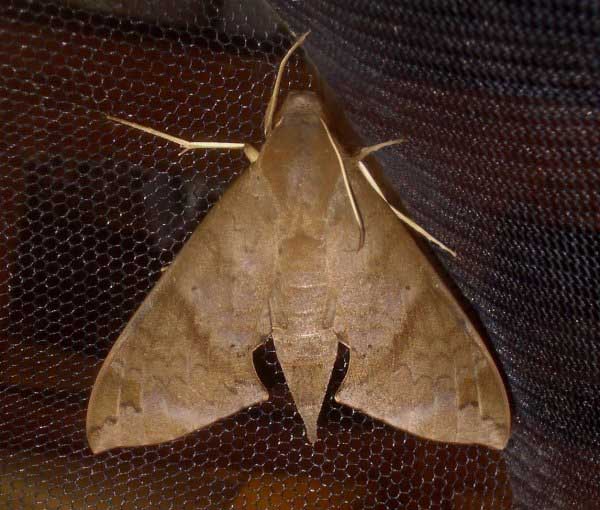
Pachylioides resumens female, Arenal Lodge, Costa Rica,
September 22, 2008, courtesy of Tony James.
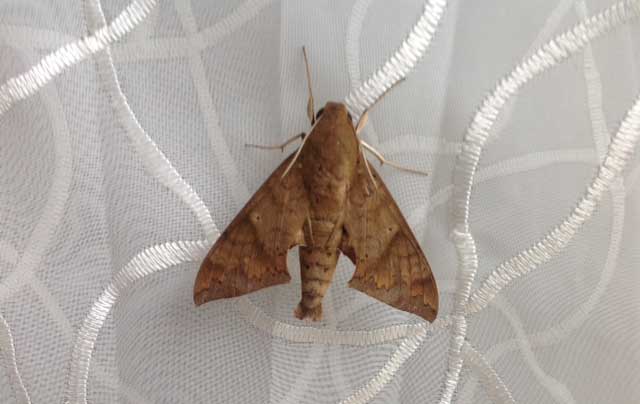
Pachylioides resumens male, 100mm, Radisson, Panama, Panama,
April 21, 2015, courtesy of Tony James.
FLIGHT TIMES:
There are several flights throughout the year in the tropics with moths predominantly on the wing at dusk.
In northeastern Argentina (Misiones Province) there is at least one flight in December (Oz Rittner). Larry Valentine confirms May and January flights in
Itanhandu, Minas Gerais, Brazil. Andres Urbas reports an April 1, 2011, flight near Kaw, French Guiana.
Gregory Nielsen reports a June flight in Meta, Colombia. Brain Fletcher reports an October flight in Costa Rica.
Visit Pachylioides resumens, Villavicencio, Meta, Colombia, courtesy of Gregory Nielsen.
Visit Pachylioides resumens, Guatemala: Izabal and Suchitepequez; Brazil: Rondonia and Bahia,
courtesy of Frank & Anna West.
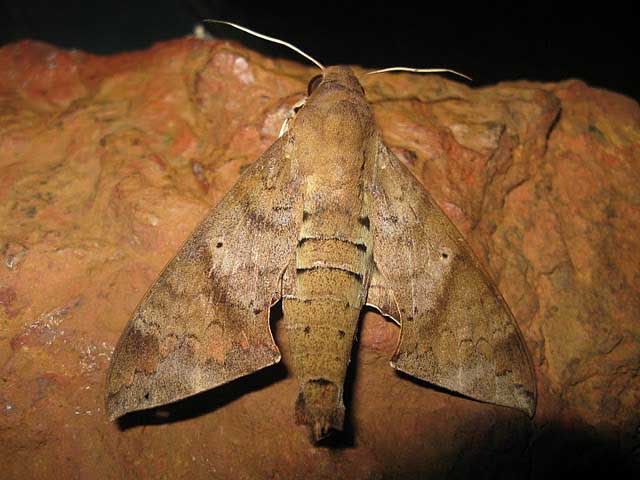
Pachylia resumens, camp Caiman, near Kaw, French Guiana,
April 1, 2011, courtesy of Andres Urbas.
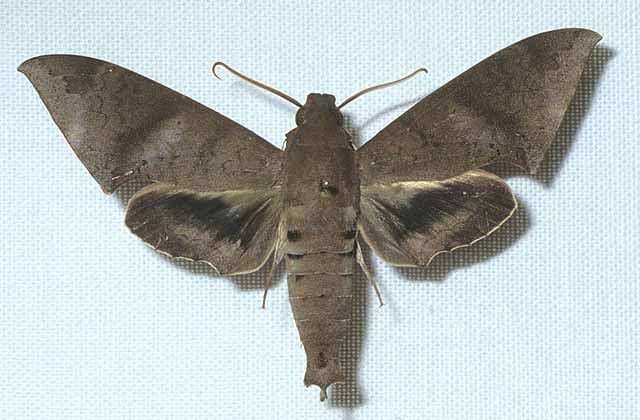
Pachylioides resumens male, courtesy of Hubert Mayer copyright.
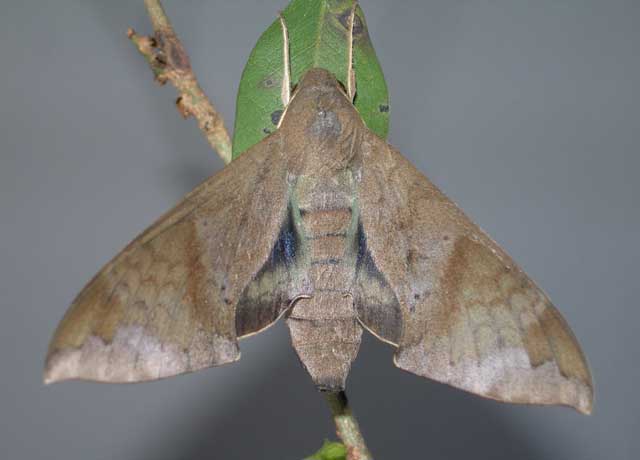
Pachylioides resumens, Itanhandu, Minas Gerais, Brazil,
May 4, 2009, courtesy of Larry Valentine copyright.
ECLOSION:
Moths emerge from pupae in thin-walled cocoons under leaf litter.
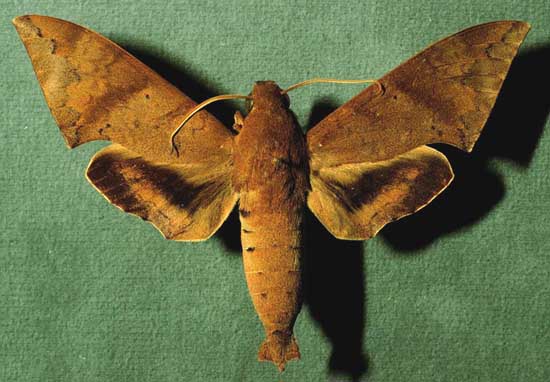
Pachylioides resumens male courtesy of Dan Janzen.
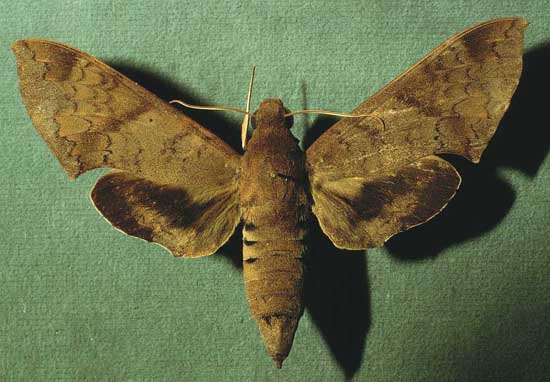
Pachylioides resumens female courtesy of Dan Janzen.
SCENTING AND MATING:
Females call in the males with a pheromone released from a gland at the tip of the abdomen.
The outer margin of the male forewing is almost straight, while in females it is quite convex.
This species seems mots active at dusk.
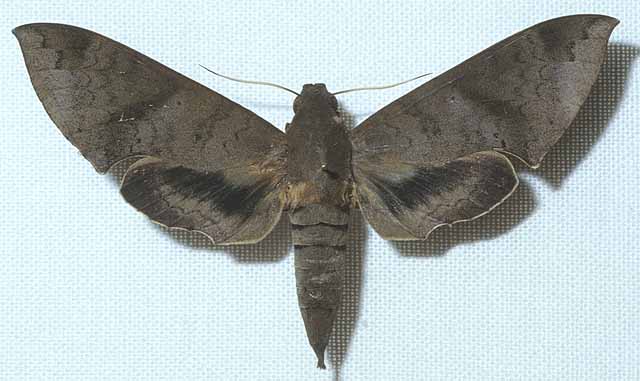
Pachylioides resumens female, courtesy of Hubert Mayer copyright.
EGGS, LARVAE, PUPAE:
Females lay eggs on Echites species in the dogbane family (Apocynaceae). Echites umbellata, Ficus and Ficus carica
are listed as larval hosts.
Jean Haxaire writes, "Several Apocynaceae, contrasting to the classical Moraceae of Pachylia
members. Described by Moss (1920) from Para, Brazil on Echites sp. and Zschokkea sp. In
Costa Rica, Forsteronia spicata and Mesechites spicata (Apocynaceae)."
Larvae are quite distinct from thos in Pachylia genus.
Larvae pupate in cocoons spun amongst leaf litter.


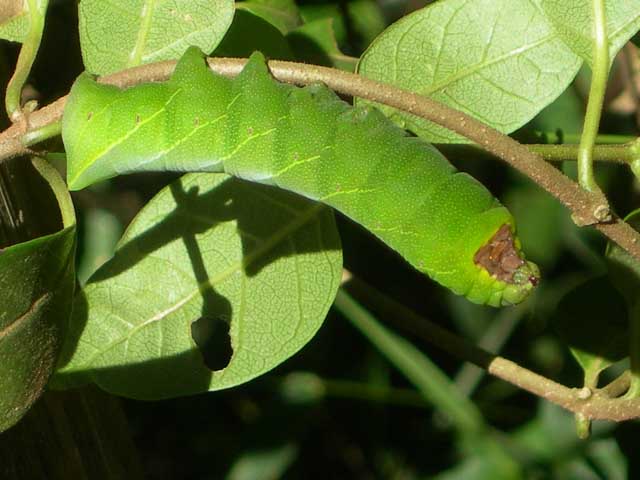
Pachylioides resumens, fifth instar, Itanhandu, Minas Gerais, Brazil, courtesy of Larry Valentine.
Use your browser "Back" button to return to the previous page.
Return to U. S. A. Table
Return to Sphingidae Index
Return to Dilophonotini Tribe
Use your browser "Back" button to return to the previous page.
This page is brought to you by Bill Oehlke and the
WLSS. Pages are on space rented from Bizland. If you would like
to become a "Patron of the Sphingidae Site", contact Bill.
Please send sightings/images to Bill. I will do my best to respond to requests for identification help.
Enjoy one of nature's wonderments: Live
Saturniidae (Giant Silkmoth) cocoons.
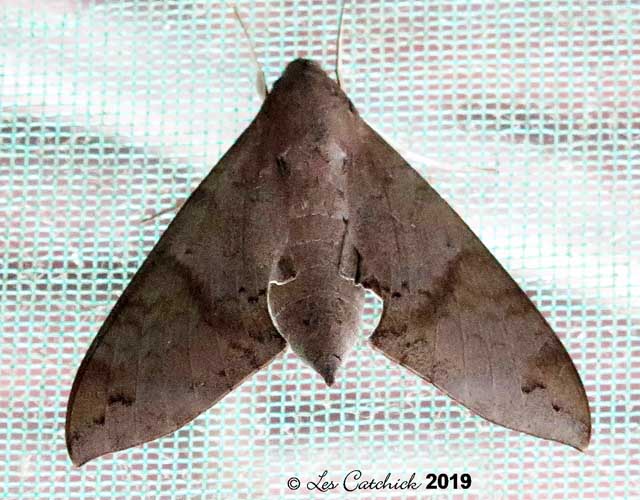
Pachylioides resumens female, Palmari, Amazonas, Brazil,
August 19, 2019, 74m, courtesy of Les Catchick.
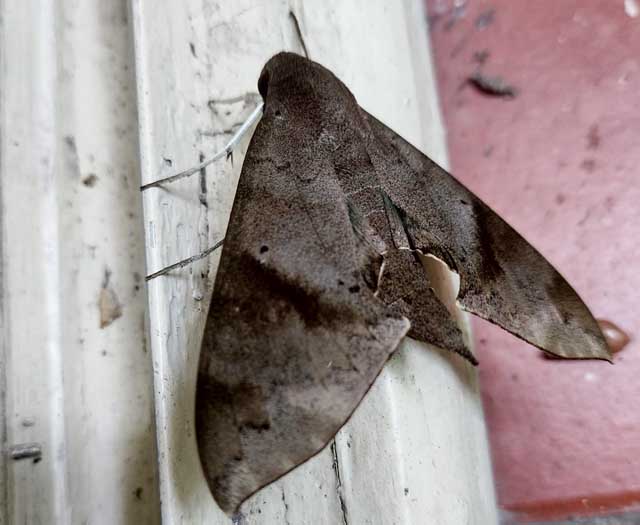
Pachylioides resumens, Porto Alegre, Rio Grande do Sul, Brazil,
courtesy of Clarissa Silva, Moreira.
 | 
Show appreciation for this site by clicking on flashing butterfly to the left.
The link will take you to a page with links to many insect sites. |
















